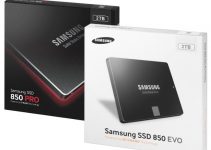Undoubtedly, Premiere Pro CC and DaVinci Resolve 12 are one of the most popular NLEs out there being a “go-to” solution for numerous filmmakers, editors and creative professionals alike. Unfortunately, the round trip between those two platforms doesn’t always goes as seamlessly and flawlessly as we all might expect, especially when there are plenty of filters, special transitions and speed changes involved in the editing process. The XML workflow provides some decent results but it’s definitely far from perfect.
Fortunately, Casey Faris has found an interesting workaround that eliminates many of the issues the XML roundtrip workflow between Premiere Pro CC and DaVinci Resolve 12 has. This alternative technique is also extremely easy to perform and the results are much, much better. In the video ahead he showcases a simple way to take a basic sequence from Premiere and import it into Resolve by utilising an EDL.
To move your sequence from Premiere Pro to Resolve you first need to completely flatten your edit and make sure that all your cuts are placed on the same track in the timeline. Then you need to render the whole thing out as a single video by utilising a proper codec that would work equally well in Premiere Pro CC and DaVinci Resolve.
If you are a Mac user your initial choice should be ProRes and if you’re using Windows then Cineform should work just fine. Exporting your timeline as a single video file is also a great way to have a high quality backup of your edit even before you start grading it so that you can always use this one in case something goes wrong with your original media.
The downside of this workflow probably would be the fact that you won’t be able to tweak and trim your edit once you’ve imported this file in Resolve as this will only work when you’ve locked your edit and you are ready to move further to colour grading. If you are a Windows user below you will find the suggested export settings in Premiere Pro that Casey Ferris have used in this tutorial.
After rendering the file in Premiere Pro CC, you also need to export an EDL of your current timeline. In essence, this small text file will tell Resolve 12 where the exact initial cuts of your edit are located so you don’t have to cut the whole thing manually. In Premiere Pro CC navigate to File>Export and choose EDL.
The final step of this workflow would be to import the already exported file from Premiere Pro in Resolve. Then right-click anywhere in your Media Pool, go to Timelines on top and import the already created EDL file by choosing Pre-conformed EDL. This way Resolve will open your rendered video in a new timeline where you will find the single file with all the cuts that you’ve previously made in Premiere Pro CC.
Overall, this is extremely easy and straightforward way to move your sequence or even a whole project from Premiere Pro CC to Davinci Resolve 12 without using XML. This will also eliminate the troubleshooting and frustration of dealing with XML bugs and flaws when you need to round trip between the two applications.
[source: Casey Faris]
Disclaimer: As an Amazon Associate partner and participant in B&H and Adorama Affiliate programmes, we earn a small comission from each purchase made through the affiliate links listed above at no additional cost to you.




